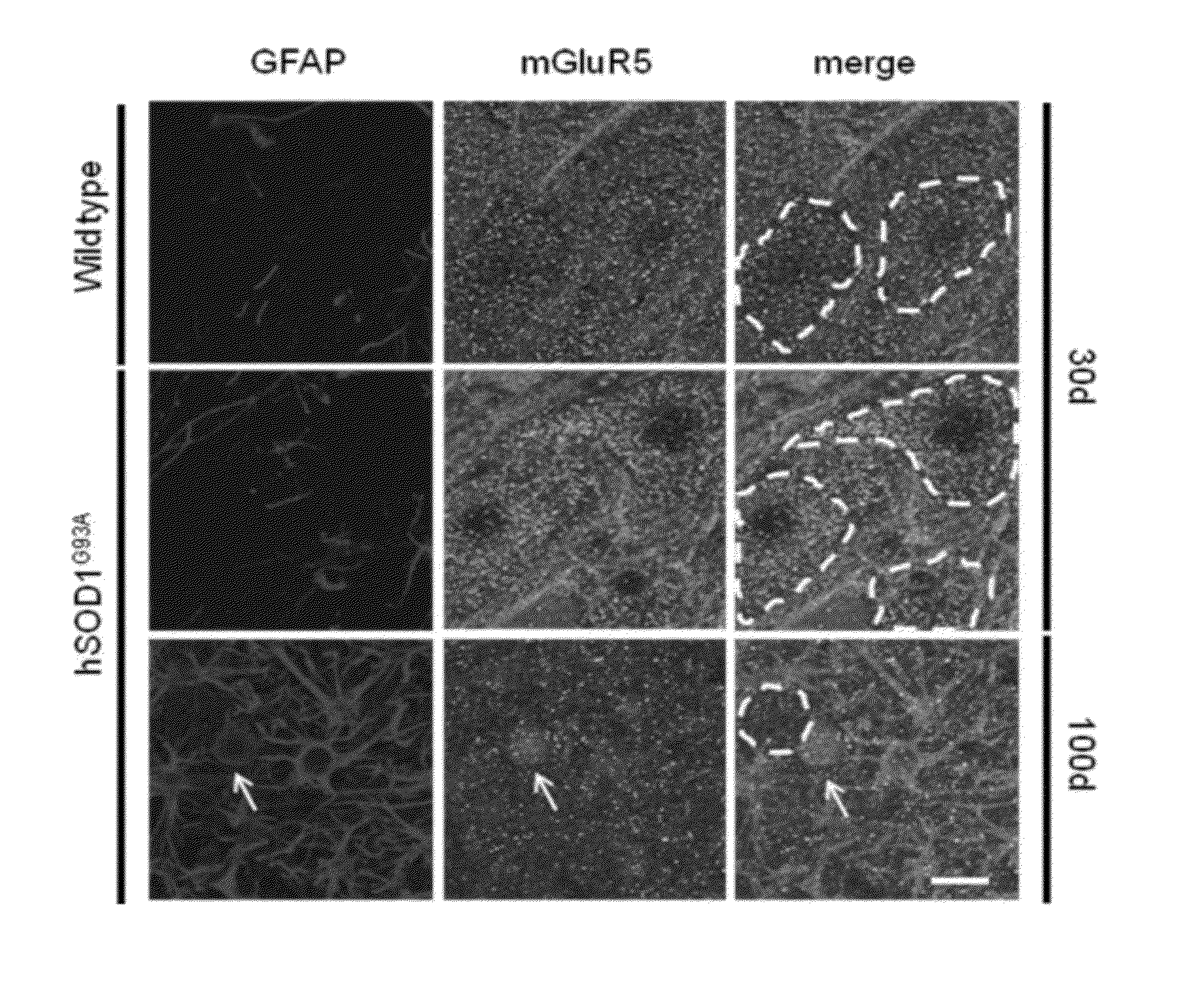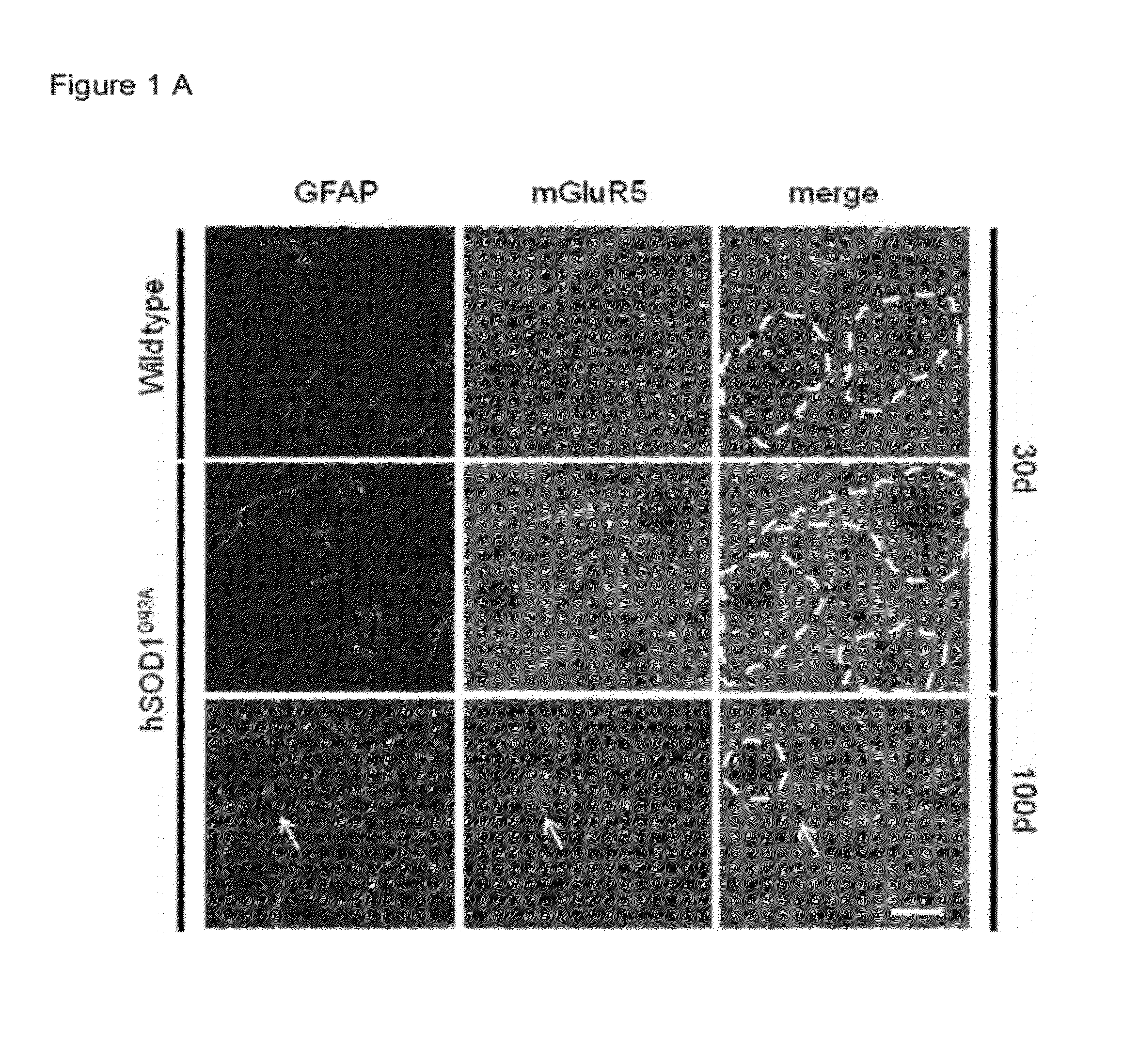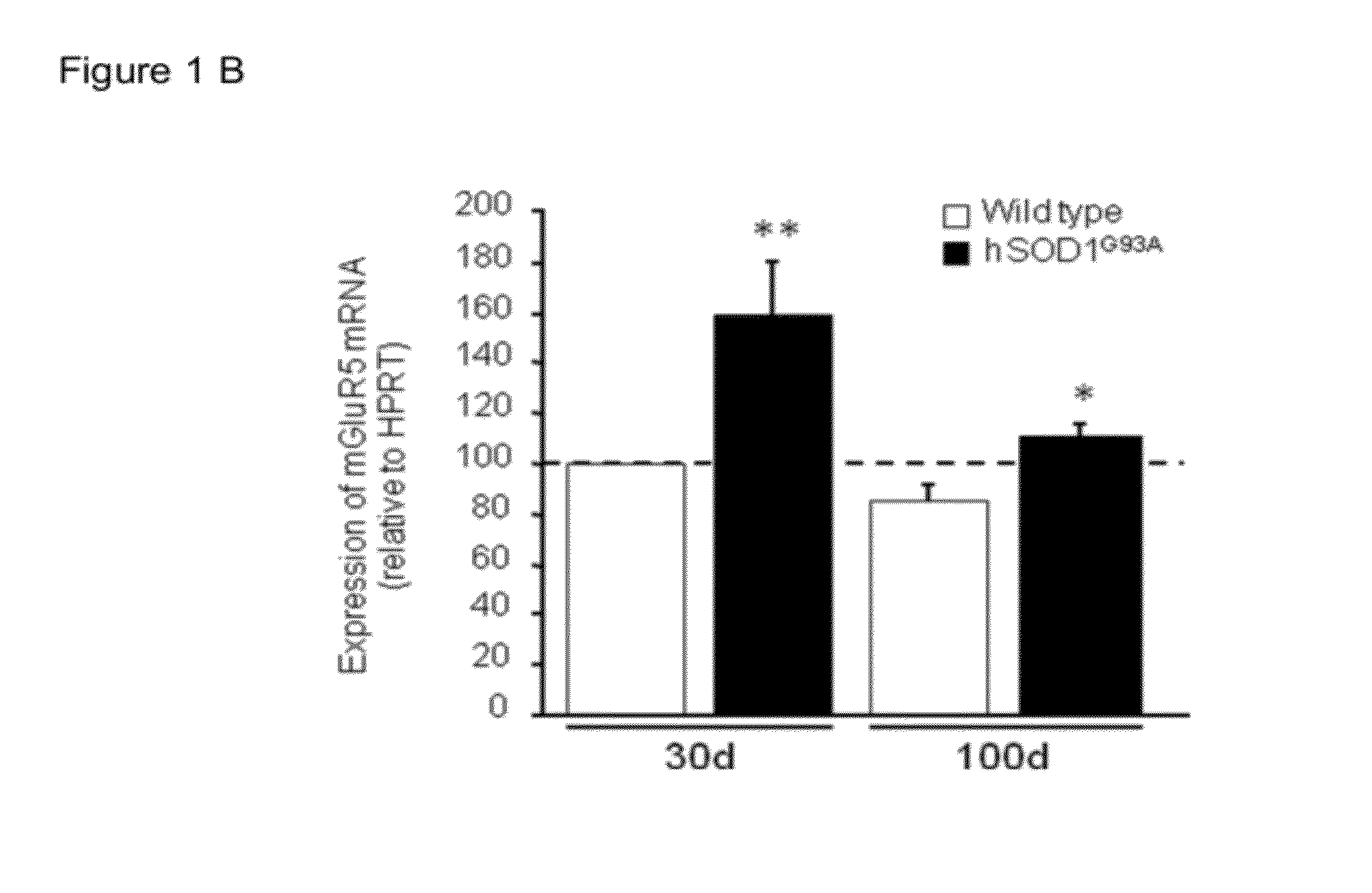Glioprotectant Peptide for Use in the Treatment of Amyotrophic Lateral Sclerosis (ALS) and Methods Related Thereto
- Summary
- Abstract
- Description
- Claims
- Application Information
AI Technical Summary
Benefits of technology
Problems solved by technology
Method used
Image
Examples
example 1
Aberrant Expression of mGluR5 in ALS Tissues
[0042]A degenerative process of the astrocytes that spatially and temporally correlates with the progression of ALS disease was previously identified in the spinal cord of hSOD1G93A mice. Degenerating astroglial cells were morphologically characterized by an unusually thick and spheroidal cap of glial fibrillary acidic protein (GFAP) (FIG. 1A, hSOD1G93A, 100d), which was associated with rare GFAP-positive processes and resulted immunopositive for the active caspase-3. Neuropathological analyses of autoptic tissues from patients affected by sporadic ALS confirmed that these unusual GFAP- and active caspase-3-positive cellular profiles are present in the neighborhood of motor neurons also in the ventral horns of the spinal cord from sALS cases (FIG. 1C-D), thus corroborating the relevance of this phenomenon in the context of the human disease. Because a role for mGluR5 was originally identified in the gliodegenerative process, the authors in...
example 2
Altered mGluR5-Mediated Intracellular Calcium ([Ca2+]i) signalling in hSOD1G93A-Expressing Astrocytes is Coupled to Cell Death
[0047]To determine whether the global over-expression of mGluR5 identified in the spinal cord of young ALS mice was reflected on astrocytes, the authors switched to studies in cell culture. First, they quantified the levels of the receptor mRNA in primary astrocytes deriving from the spinal cord of newborn hSOD1G93A and wild-type animals. qRT-PCR analysis revealed that hSOD1G93A-expressing astrocytes show a 2.6-fold increase in the amount of mGluR5 transcripts when compared to wild-type sister cultures (FIG. 2A). The mGluR5 Ca2+-signalling was then studied by single-cell Fluo4 imaging of the [Ca2+]i changes induced by (RS)-3,5-dihydroxyphenylglycine (DHPG), a selective agonist of group I mGluRs. They found that the majority of wild-type astrocytes (about 68%, FIG. 2D) responded to the local application of 100 μM DHPG with a single [Ca2+]i transient followed b...
example 3
The BH4 Domain of Bcl-XL Restores [Ca2+]i Oscillations in hSOD1G93A-Expressing Astrocytes
[0050]Several lines of evidence indicate that the members of the Bcl-2 family are important regulators of cell death mechanisms, and this has been attributed, at least in part, to their ability to modulate endoplasmic reticulum (ER) Ca2+ signals. Notably, Bcl-XL was reported to exert its full anti-apoptotic effects by directly binding to the IP3Rs. This interaction was shown to sensitize cells to low concentrations of IP3 and enhance spontaneous [Ca2+]i oscillations, an event that has been correlated with increased cell death resistance. However, the specific domain of Bcl-XL involved in this process was not elucidated. Since the BH4 domain of Bcl-XL importantly contributes to cell death suppression, the authors of the present invention decided to test the effects towards [Ca2+]i signalling of TAT-BH4, a fusion peptide in which BH4 is conjugated with the cell-penetrating TAT peptide from the HIV...
PUM
| Property | Measurement | Unit |
|---|---|---|
| Fraction | aaaaa | aaaaa |
| Electrical resistance | aaaaa | aaaaa |
| Pharmaceutically acceptable | aaaaa | aaaaa |
Abstract
Description
Claims
Application Information
 Login to View More
Login to View More - R&D
- Intellectual Property
- Life Sciences
- Materials
- Tech Scout
- Unparalleled Data Quality
- Higher Quality Content
- 60% Fewer Hallucinations
Browse by: Latest US Patents, China's latest patents, Technical Efficacy Thesaurus, Application Domain, Technology Topic, Popular Technical Reports.
© 2025 PatSnap. All rights reserved.Legal|Privacy policy|Modern Slavery Act Transparency Statement|Sitemap|About US| Contact US: help@patsnap.com



